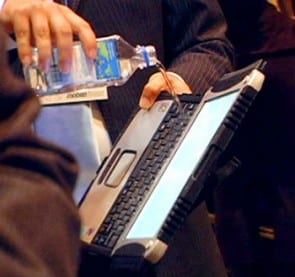 Are smartphones and tablets tough enough for down-and-dirty field service work?
Are smartphones and tablets tough enough for down-and-dirty field service work?
The answer is no — at least according to a new white paper, “New Roles, New Rules: Are Your Smart Phones Tough Enough for Work?” from rugged device manufacturer Intermec. Yes, there is a bit of a conflict of interest there, so take it with a grain of salt. But the paper does point out some interesting data for field service organizations considering the rugged-vs.-consumer device dilemma.
After three years, the report says, non-rugged smartphones and handheld devices need to be replaced in 82.6 percent of cases; for ruggedized machines, that number is only 18.2 percent.
Those stats are a from 2007, but it’s still a pretty dramatic difference.
Intermec, naturally, wasn’t bullish on phone cases, either: “Cases are best issued to supplement device protection,” the report said. “A case can enhance a phone’s durability, but it is no substitute for a rugged design.”
If your organization decides to go the rugged route, here are a few helpful tips to remember:
- IP Ratings: Rugged devices should come with an IP rating, which measures the device for its resistance to dust, dirt, and moisture. The IP rating is a two-digit number (say, IP46). The first number, ranging from one to six, measures its ability to seal out dust particles, while the second number (from one to eight) measures its resistance to water. The higher the number the better.
- Drop Ratings: These can be very subjective, and vary in terms of the height of the drop (typically three feet or four feet), the surface they’re dropped on (vinyl flooring, concrete, carpet), and how they’re dropped (on the corner, screen, or flat on the back).
- What Breaks First: Touchscreens, external parts (like an antennae), and the internal camera typically go first. According to the report, a device fail typically costs technicians between 50 and 80 minutes of work — that’s at least one call a day. That lost productivity accounts for 41 percent of the total cost of ownership of the device, says the report.
More: Five Ways to Cut Field-Service Costs, Without Losing Quality.
Click here to download a free whitepaper, “Five Steps to Make Field Service Profitable.”

Share this: